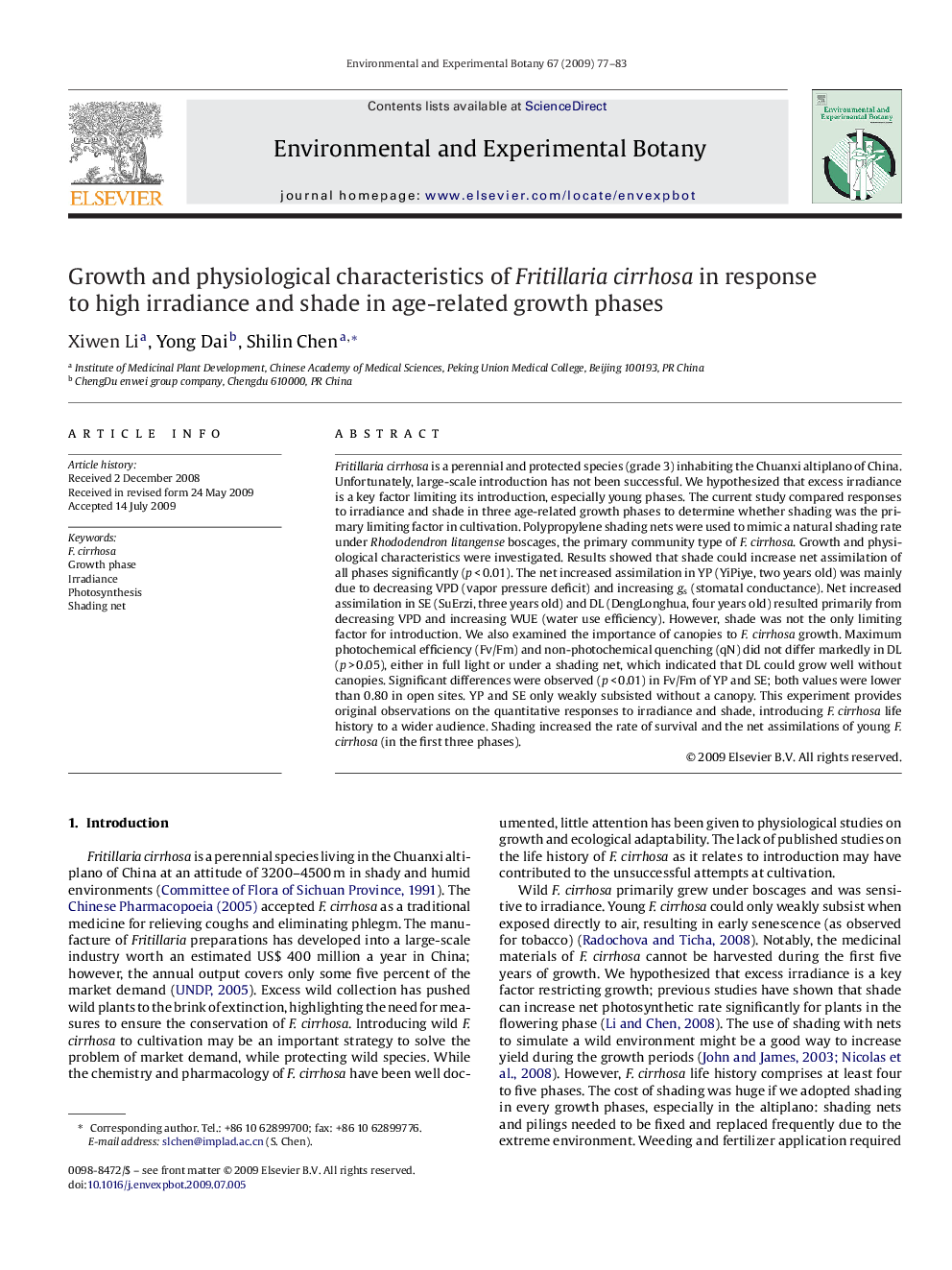| Article ID | Journal | Published Year | Pages | File Type |
|---|---|---|---|---|
| 4555035 | Environmental and Experimental Botany | 2009 | 7 Pages |
Fritillaria cirrhosa is a perennial and protected species (grade 3) inhabiting the Chuanxi altiplano of China. Unfortunately, large-scale introduction has not been successful. We hypothesized that excess irradiance is a key factor limiting its introduction, especially young phases. The current study compared responses to irradiance and shade in three age-related growth phases to determine whether shading was the primary limiting factor in cultivation. Polypropylene shading nets were used to mimic a natural shading rate under Rhododendron litangense boscages, the primary community type of F. cirrhosa. Growth and physiological characteristics were investigated. Results showed that shade could increase net assimilation of all phases significantly (p < 0.01). The net increased assimilation in YP (YiPiye, two years old) was mainly due to decreasing VPD (vapor pressure deficit) and increasing gs (stomatal conductance). Net increased assimilation in SE (SuErzi, three years old) and DL (DengLonghua, four years old) resulted primarily from decreasing VPD and increasing WUE (water use efficiency). However, shade was not the only limiting factor for introduction. We also examined the importance of canopies to F. cirrhosa growth. Maximum photochemical efficiency (Fv/Fm) and non-photochemical quenching (qN) did not differ markedly in DL (p > 0.05), either in full light or under a shading net, which indicated that DL could grow well without canopies. Significant differences were observed (p < 0.01) in Fv/Fm of YP and SE; both values were lower than 0.80 in open sites. YP and SE only weakly subsisted without a canopy. This experiment provides original observations on the quantitative responses to irradiance and shade, introducing F. cirrhosa life history to a wider audience. Shading increased the rate of survival and the net assimilations of young F. cirrhosa (in the first three phases).
